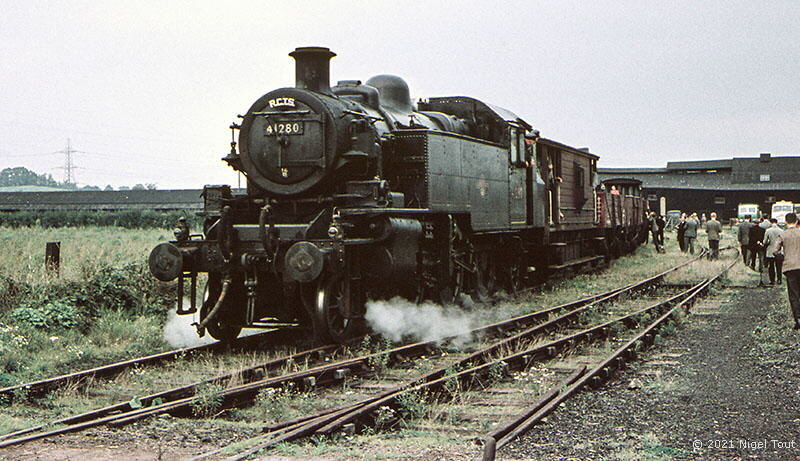[Leicester North]
[Abbey Lane Area]
[North Viaduct]
[Leicester Central]
[Braunstone Gate]
[Goods Yard]
[Aylestone]
[Bridging the Gap]
[Notes for Visitors]
[Old Photographs]
[Archive]
[Links]
Old Photographs Section
This section has old photographs south from Ruddington to Loughborough.
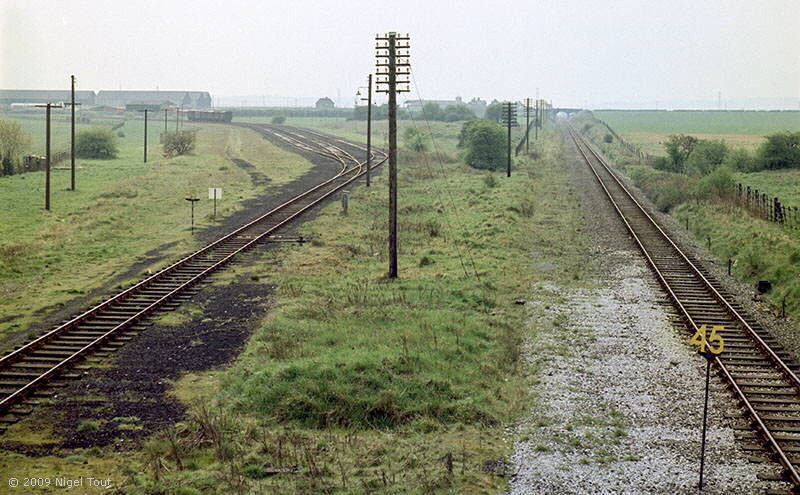
Immediately south of Ruddington station was Ruddington Ordnance, Storage and Disposal Depot which was connected to the ex-GCR main line. Here we are looking south from ‘50-steps bridge’ towards East Leake and Loughborough. On the left is the line leading to the Ordnance Depot which was then in use, as can be seen by the line of vans in the distance. With the closure of the route from Nottingham trains to the depot would come from the south, via a new chord from the Midland Main Line. April 1975.
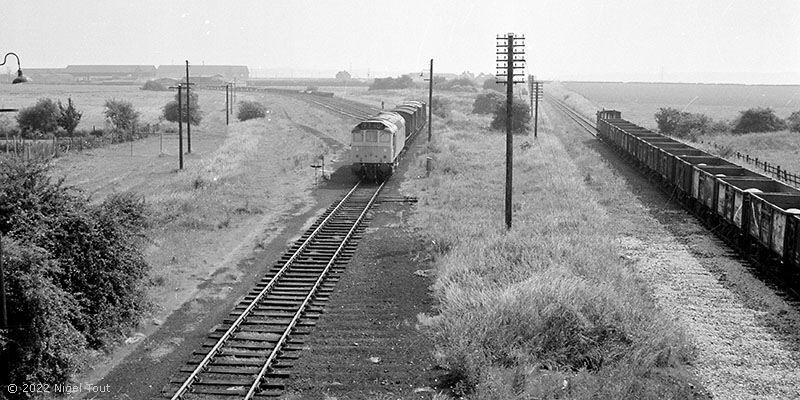
A similar view to above showing Bo-Bo (later class 25) no. 7604, with headcode 9T40, shunting wagons at Ruddington Ordnance Depot in 1973. Both British Gypsum at Hotchley Hill and the ordnance depot were serviced by this train. The open wagons, apparently with gypsum, are standing on the old main line before the ordnance wagons are added on. At this date the whole train would head north to Nottingham. Unknown photographer, negative bought with copyright.
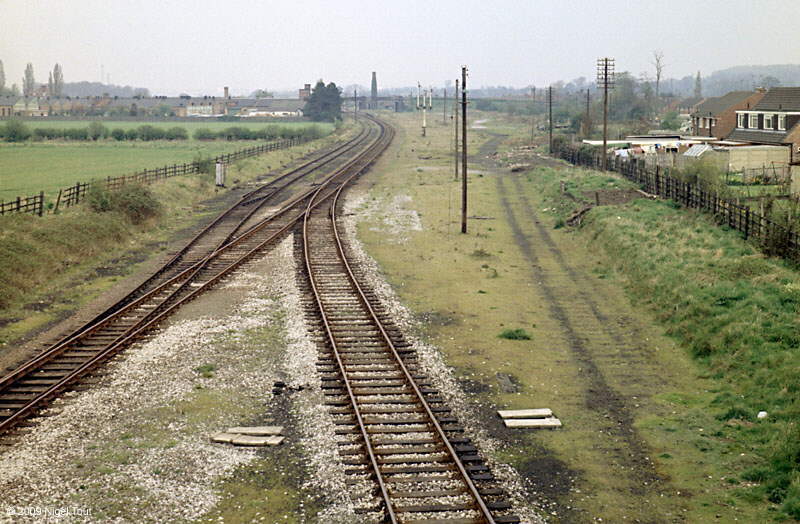
Looking north towards the site of Ruddington station site from ‘50-steps bridge’ with the line to the Ordnance Depot heading directly below. April 1975.
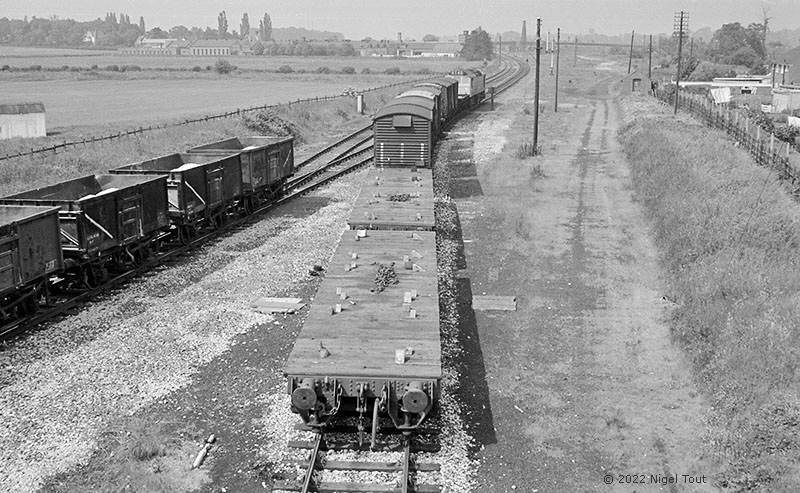
Again, a similar view to the previous photograph showing Bo-Bo (later class 25) no. 7604, with headcode 9T40, shunting wagons at the branch to Ruddington Ordnance Depot in 1973. The two flat wagons have the remains of chocks where vehicles were secured before being unloaded and so it looks like wagons from the depot are about to be added to the open wagons standing on the old main line before the whole train would head north to Nottingham. Unknown photographer, negative bought with copyright.
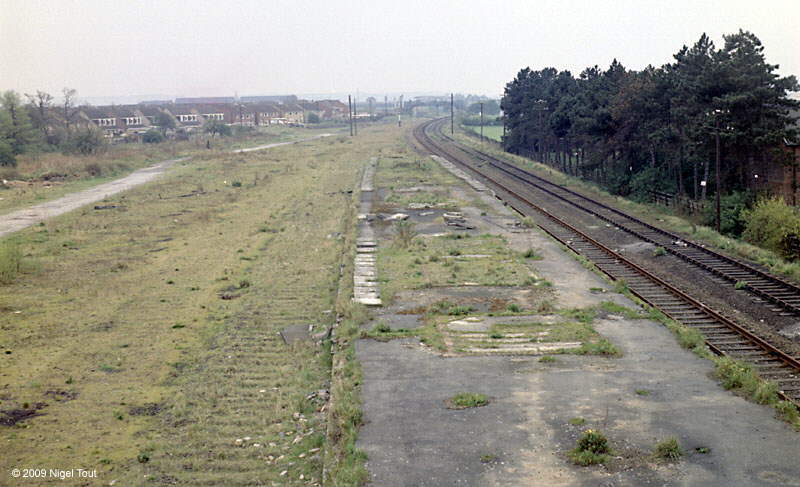
Looking south from the road bridge at Ruddington station with the bare platform in the foreground. In the distance ‘50-steps bridge’ can just be made out. April 1975.
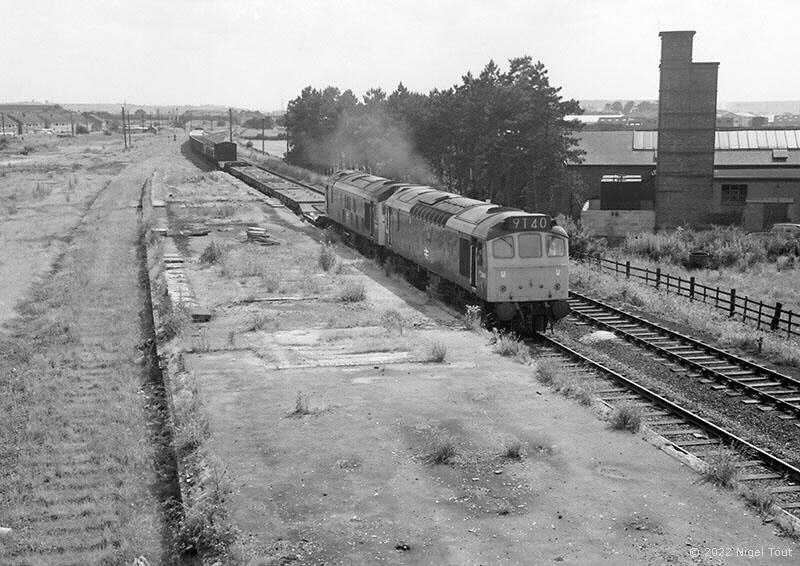
On this occasion train 9T40 has two Bo-Bos (later Class 25) with no. 5246 leading. Here the train has been made up and it is heading north towards Nottingham past the remains of Ruddington station. Unknown photographer, negative bought with copyright.
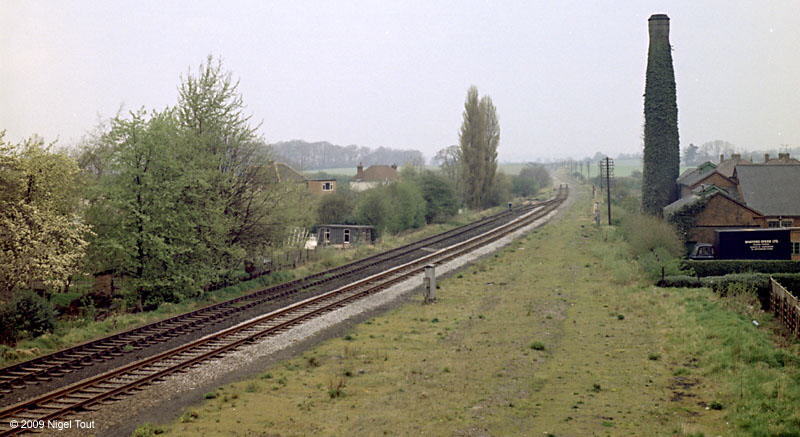
By April 1975, when this photograph looking north from the road bridge at Ruddington station was taken, the trains from the Ordnance Depot headed south to the new chord onto the Midland Main Line at Loughborough (see below). Here the end of the line can be seen after the track leading to Nottingham was lifted. April 1975.
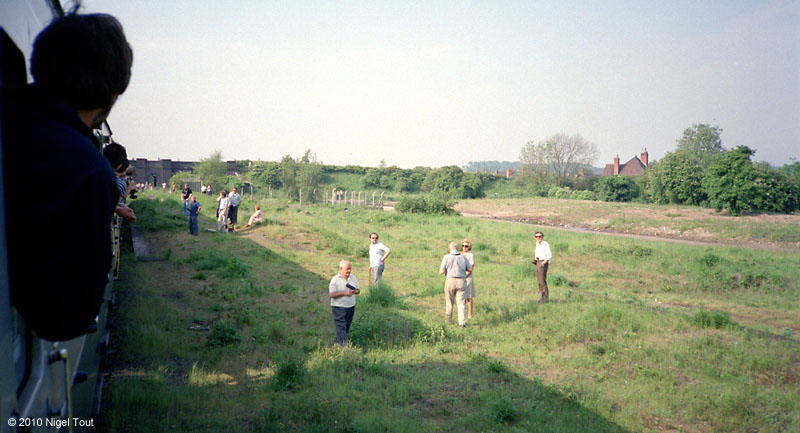
With the closure of the Ordnance Depot, a special commemorative train, the ‘Ruddington Requiem’, was run in June 1984. This was expected to be one of the last trains here. This view shows the site of Ruddington station taken from the arriving special train, as it slowly approached the limit of the line at a buffer stop just beyond the bridge at the north of the station.
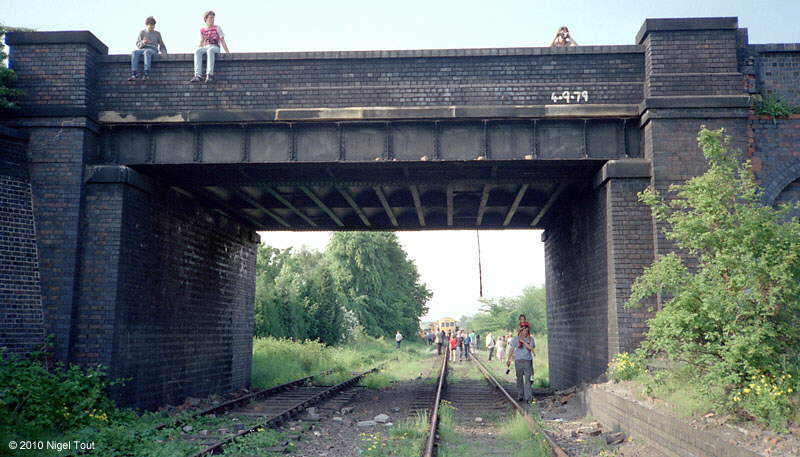
In the distance the ‘Ruddington Requiem’ special train has reached the end of the line just to the north of the site of Ruddington station. The remains of the north-bound platform is on the right, June 1984.
South of Ruddington and just north of Rushcliffe Halt a short branch headed off west to the gypsum works at Gotham (map below). At the works on 10th September 1960 a train of brake vans and wagons with 2-6-2T 41280 at the front was waiting to take those who had arrived by bus from the nearby Gypsum Mine's Ltd Kingston-on-Soar works on the RCTS ‘Gypsum Mines Rail Tour’. This short train carried the participants to Gotham Sidings on the GCR main line where they transferred to passenger coaches which the same locomotive took on to Nottingham. (Original slide from my collection, photographer unknown.) Information from the Rail Tour Itinerary (pdf).
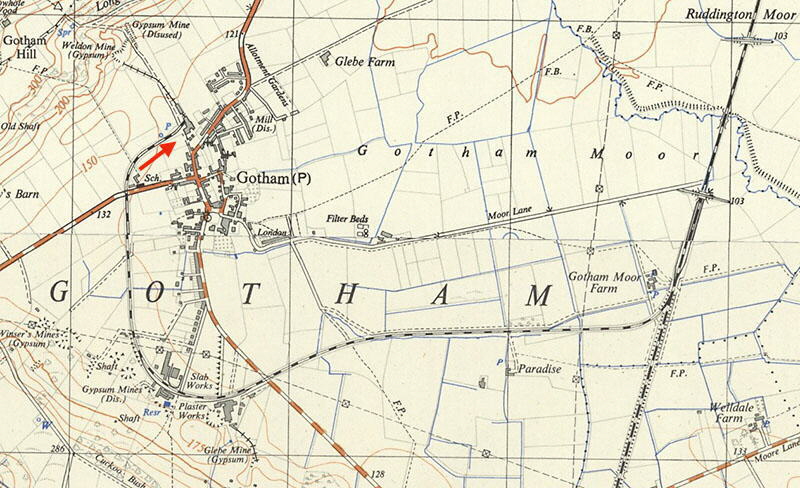
Map of the Gotham branch. The red arrow shows where the photograph above was taken.
Source: National Library of Scotland, OS 1:25,000, published 1952, cropped and arrow added (CC-BY-NC-SA licence).
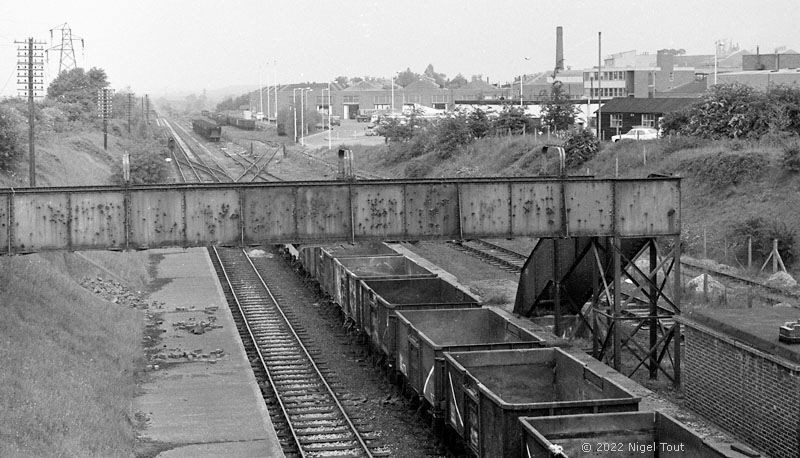
A few miles south of Ruddington is the Gypsum works at Hotchley Hill, alongside Rushcliffe Halt. Here in June 1973 many of the open wagons then used can be seen. The wagons in the foreground stand in the southbound platform of Rushcliffe Halt.
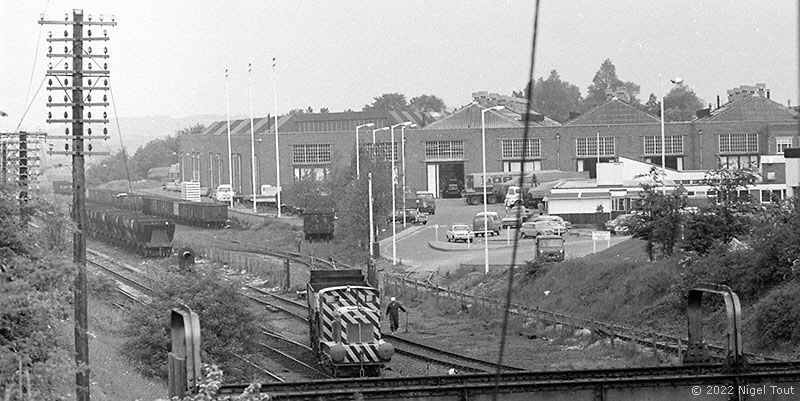
Here, one of the works Ruston Hornsby diesel mechanical shunters is selecting a few wagons from the exchange sidings with the ex-GCR line.
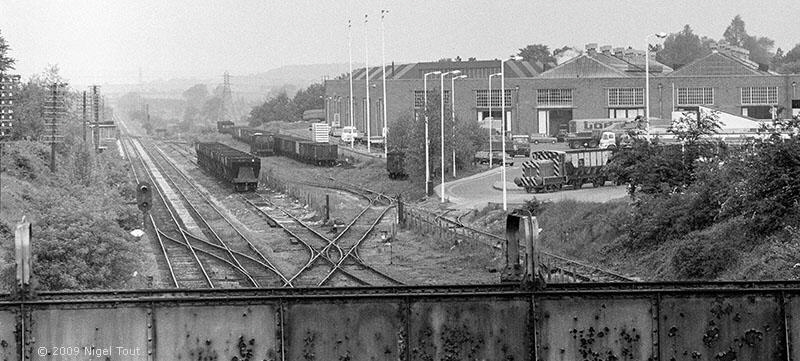
The wagons were then propelled into the works.
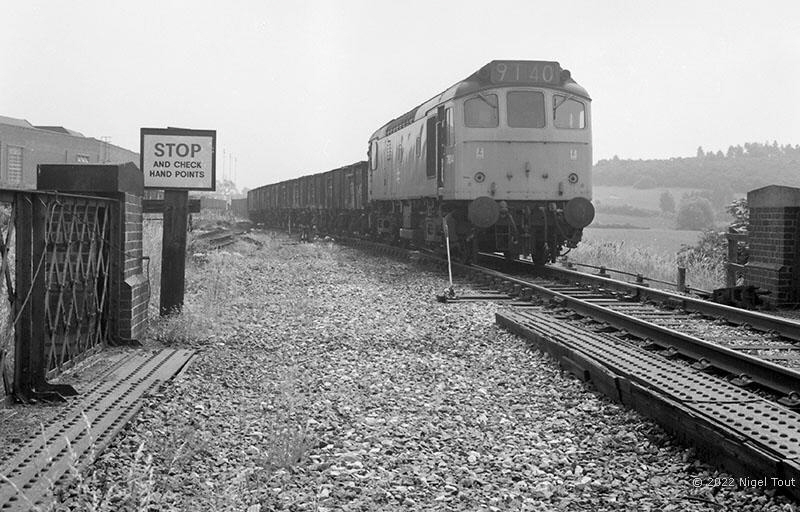
Bo-Bo (later Class 25) no. 7604 shunting at the north end of Hotchley Hill in 1973 while on train 9T40, perhaps the same day as the photographs at Ruddington, at the top of the page. The train would later head northwards to Ruddington Ordanace Depot. Unknown photographer, negative bought with copyright.
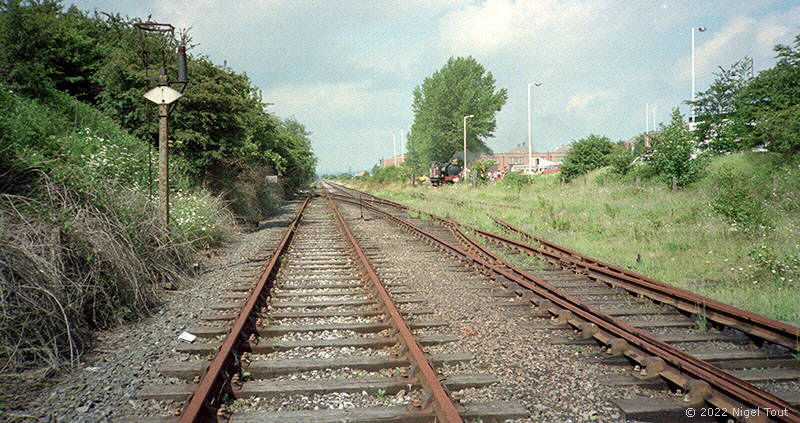
Steam at Hotchley Hill. On June 27th 1987 there was an open day at the Hotchley Hill works of British Gypsum. As one of the attractions, the Main Line Steam Trust at Loughborough provided a steam locomotive and brake van to give short trips in the exchange sidings. Note the sad remains of the colour-light signal on the left.
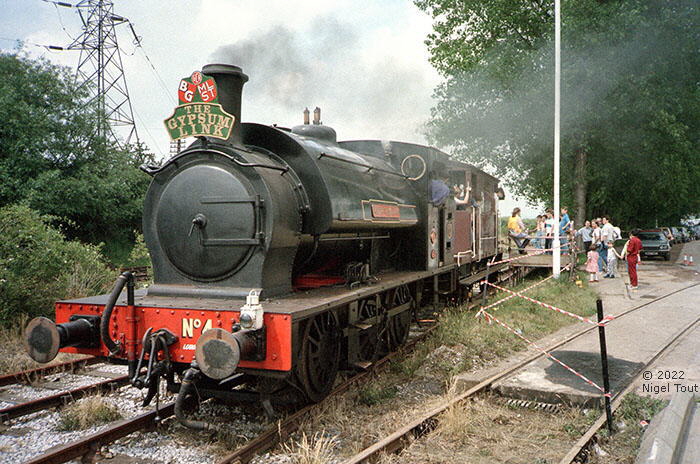
0-6-0ST Steam locomotive ‘Robert Nelson No.4’ with brake van giving short trips up and down the exchange sidings at Hotchley Hill during the British Gypsum works open day, 27/6/1987.
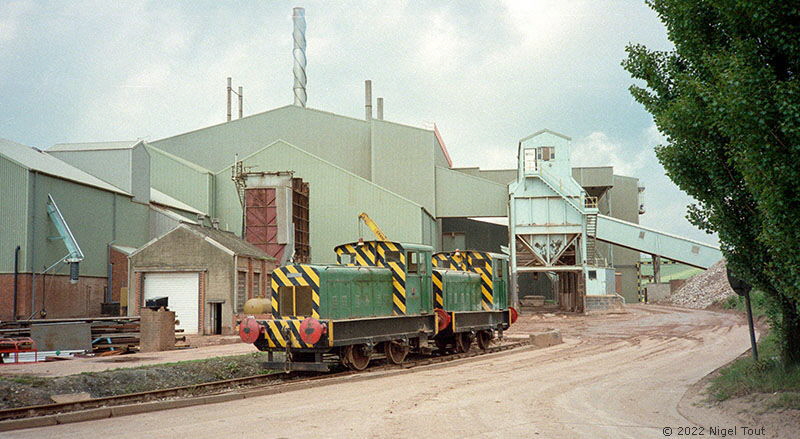
During the open day the opportunity was taken to seek out and photograph these two works Ruston Hornsby diesel mechanical shunters that worked at Hotchley Hill. I believe that it is the front locomotive which appears with the wagons in the previous photographs.
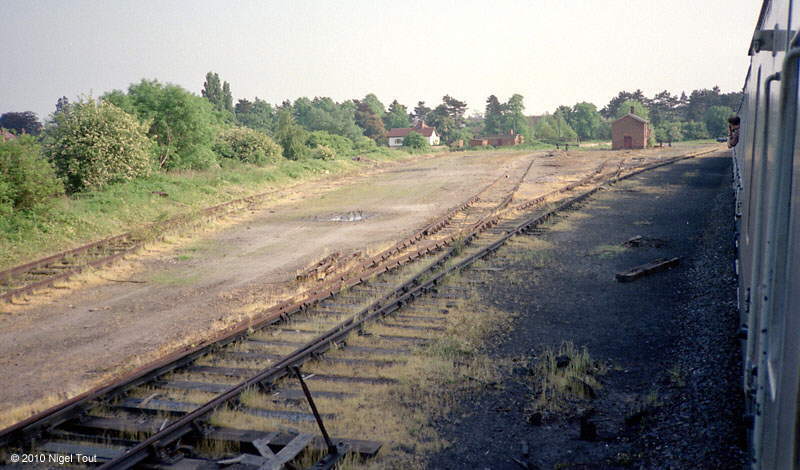
About a mile south of Hotchley Hill was East Leake goods yard, seen here looking south east, photographed from the returning ‘Ruddington Requiem’ train, June 1984. Houses now occupy this area.
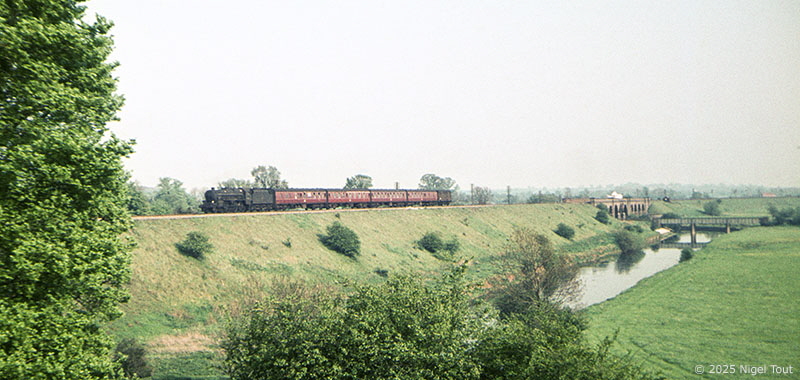
‘Black Five’ 4-6-0 no. 44836 heads north at Stanford-on-Soar having just crossed the viaduct at Loughborough Meadows with the 1438 ex-Marylebone on 12th May 1965. This area is now overgrown by trees as can be seen in the similar 2015 view on this site.
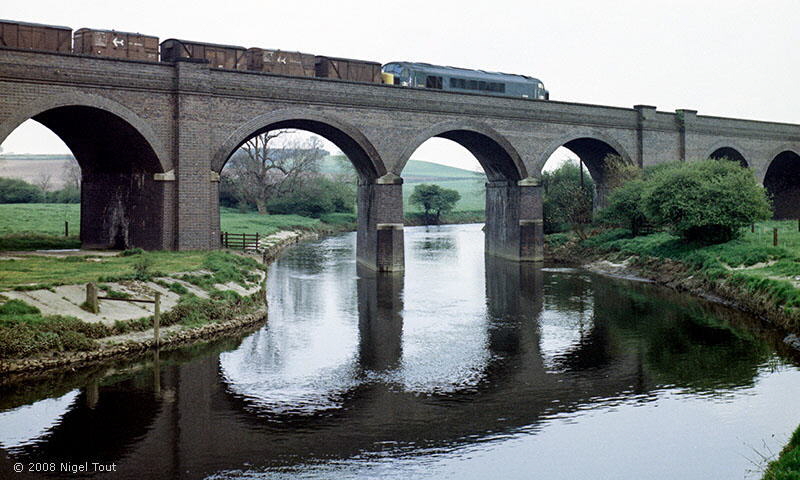
In May 1975, “Peak” 1-Co-Co-1 45003 heads south on the viaduct over the River Soar at Loughborough Meadows. The vans and old-style containers will have come from Ruddington Ordnance, Storage and Disposal Depot. The train will take the chord from the ex-GCR to the ex-Midland Railway at the new Loughborough Chord Junction.
To give access to Ruddington ordnance depot and the gypsum works at Hotchley Hill, and allow the line of the Great Central railway in the centre of Nottingham to be closed and demolished, a chord was built on the northern outskirts of Loughborough from the Great Central line down to the Midland line. Below are some photographs of this chord being built.
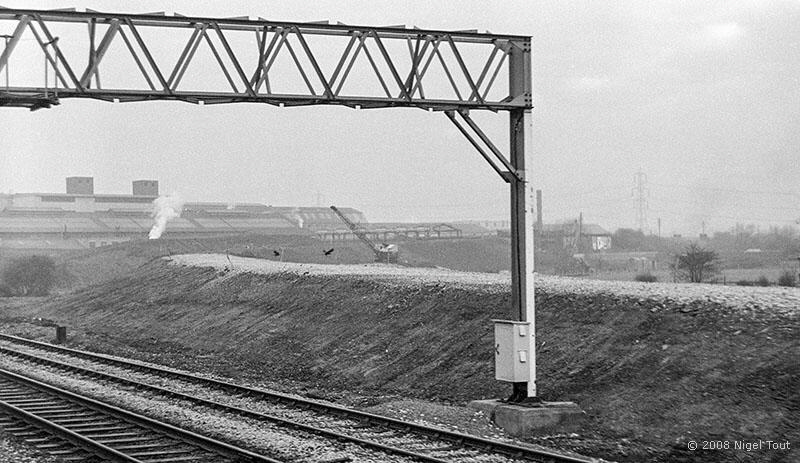
The chord from the Midland main line leading up to the Great Central line under construction in November 1973.

Looking from Nottingham Road, the new chord is the more distant embankment on the left. Much of the material for it was obtained from the disused Great Central embankment off to the right, over the bridge over the Midland main line.
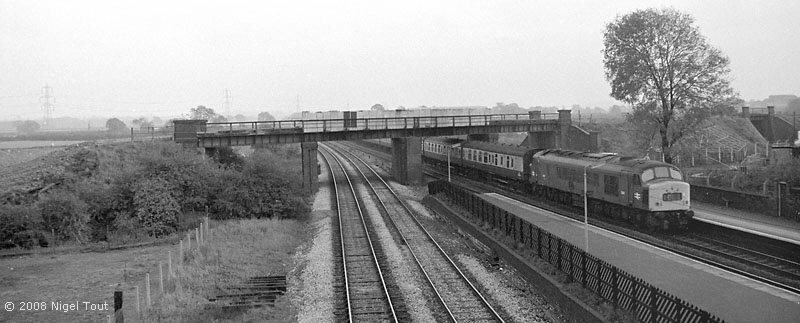
At this time the original Great Central bridge over the Midland main line had corrugated iron sheets attached to its sides to catch any material dropping from the lorries which transported the embankment fill from one side to the other during construction of the new chord. Here 1-Co-Co-1 “Peak” class, number D82, enters Loughborough Midland station under the bridge with an express from London.

In this view the embankment for the chord was almost complete except for the conduit taking the Hermitage Brook. Looking south with the Great Central line on the right.
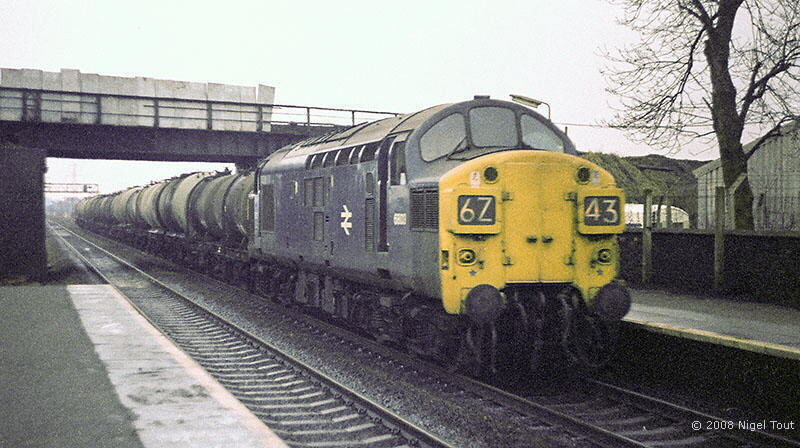
English Electric Co-Co number 6803 pulls a train of oil tanks northwards under the Great Central bridge at Loughborough. The corrugated iron sheeting to prevent material falling off the bridge can clearly be seen, January 1974.
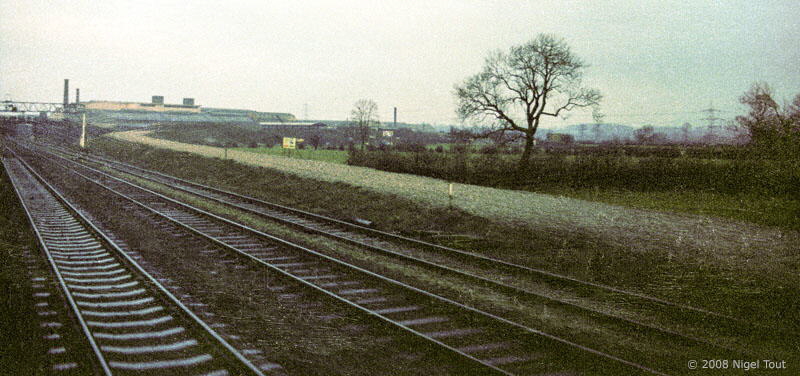
Photograph of the new chord ready for the track to be laid, taken from a northbound train on the Midland main line in January 1974.
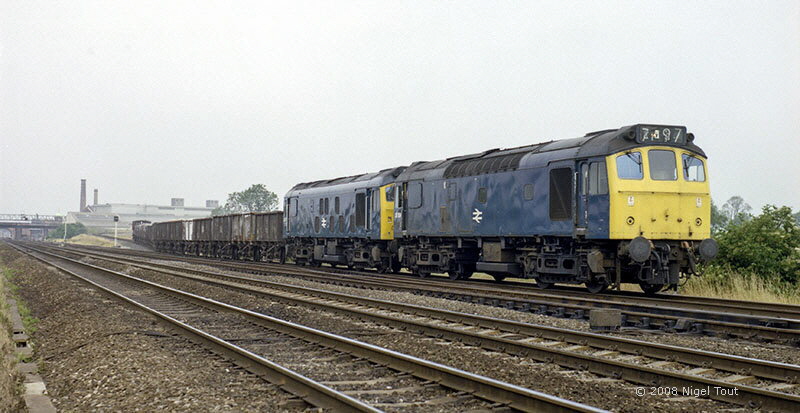
In July 1975, Bo-Bos 25104 and 25037 trundle down the completed chord from the ex-GCR onto the ex-Midland Railway main line at Loughborough Chord Junction with a train. The redundant GCR bridge over the Midland main line can just be seen in the distance on the left beyond a signal gantry.
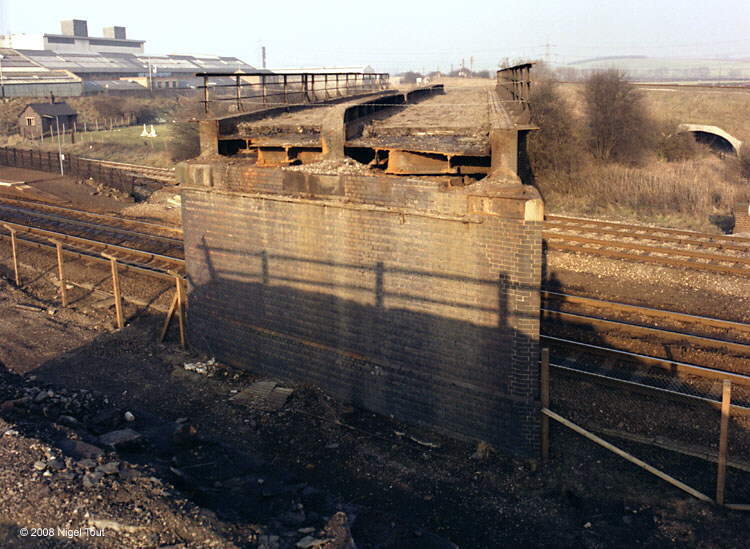
In winter 1979/80, the GCR bridge over the ex-Midland Railway main line stands ready for final demolition, here looking north. Part of the bridge has already been demolished since there were originally spans over four openings and the span over the southernmost opening in the foreground, which apparently never had any tracks through it, has already been demolished. The brick pier immediately in front is a central support not an abutment and above it is the cut-off end of the decking. Beyond on the right the new embankment with the chord from the GCR to the Midland can be made out, passing over a large concrete culvert.
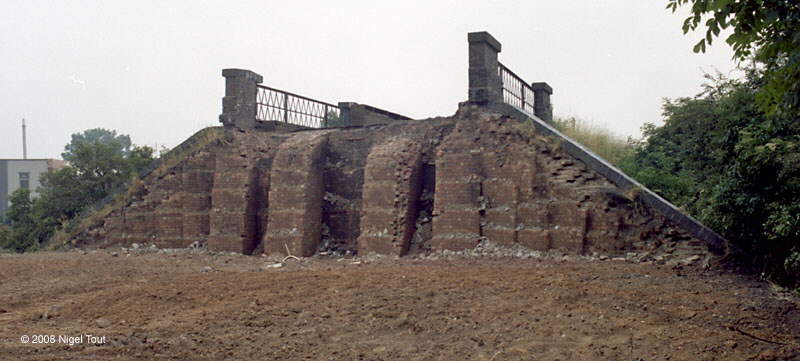
It was unusual for an embankment to be removed before a bridge, it was usually the other way round. But this was the situation at Railway Terrace, just south of the bridge over the Midland Main Line, in 1981, and allows examination of the construction of the bridge abutment.
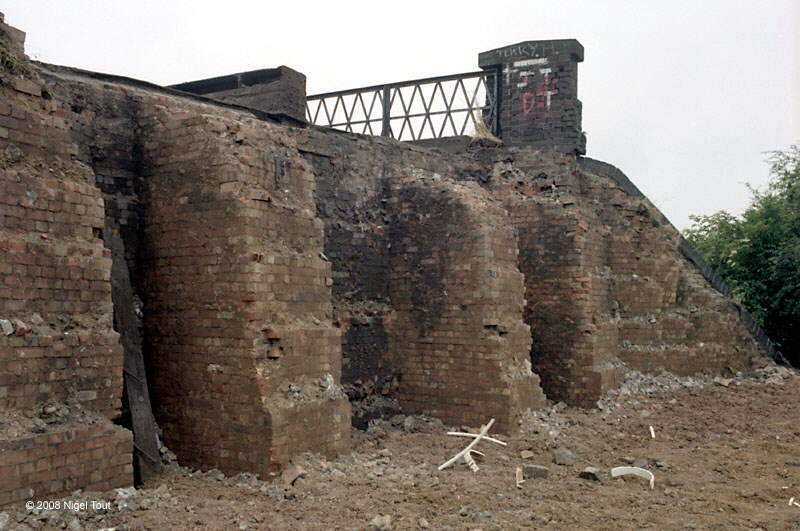
Close up of the bridge abutment at Railway Terrace. The buttresses would have strengthened the abutment, supporting it from any tendency to topple over, and would also have locked the abutment to the embankment.
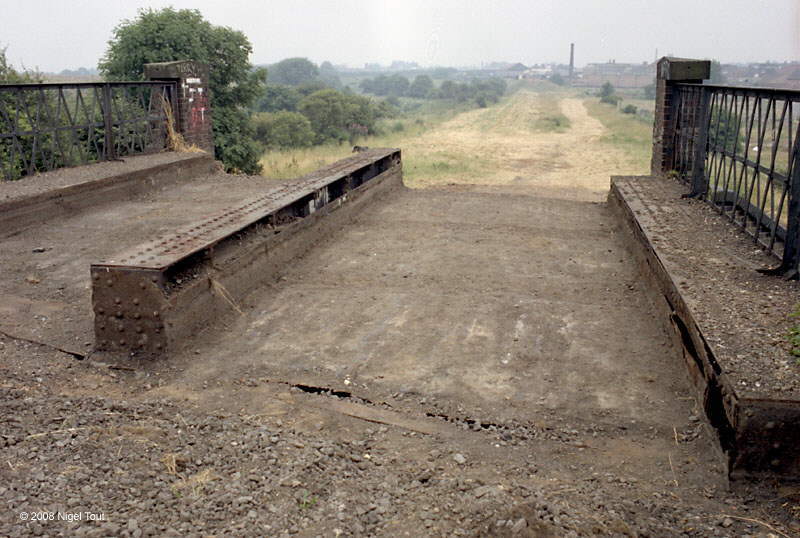
Looking south from on top of the Railway Terrace bridge along the line of the removed embankment leading to the northern limit of the preserved Great Central Railway.
This bridge, which was subsequently removed, and the missing embankment are being be replaced as part of the GCR ‘Bridging the Gap’ project.
Old Photographs Section
[Leicester North]
[Abbey Lane Area]
[North Viaduct]
[Leicester Central]
[Braunstone Gate]
[Goods Yard]
[Aylestone]
[Bridging the Gap]
[Notes for Visitors]
[Old Photographs]
[Archive]
[Links]
© 2001-2025 Text and photographs copyright Nigel Tout, unless otherwise indicated.
